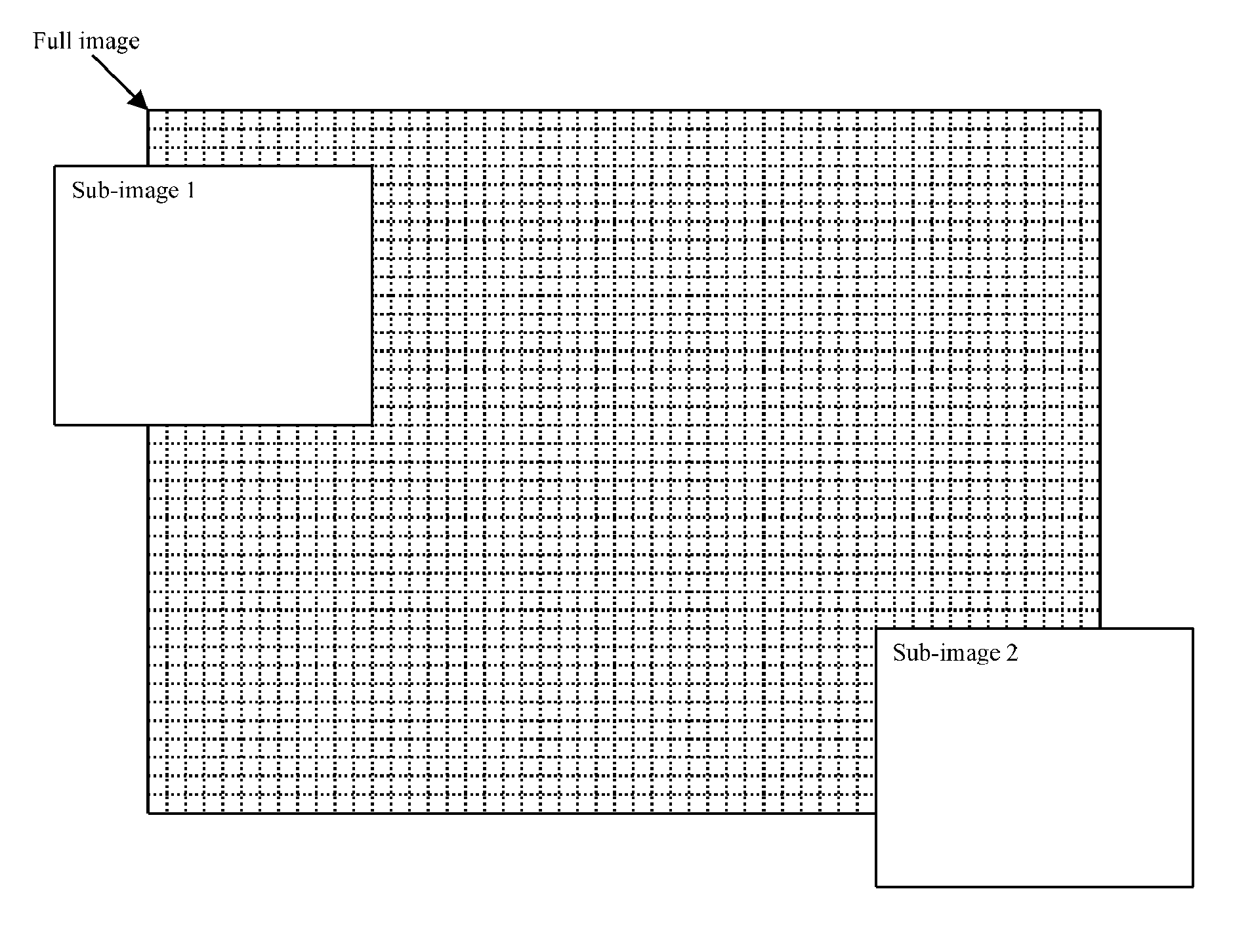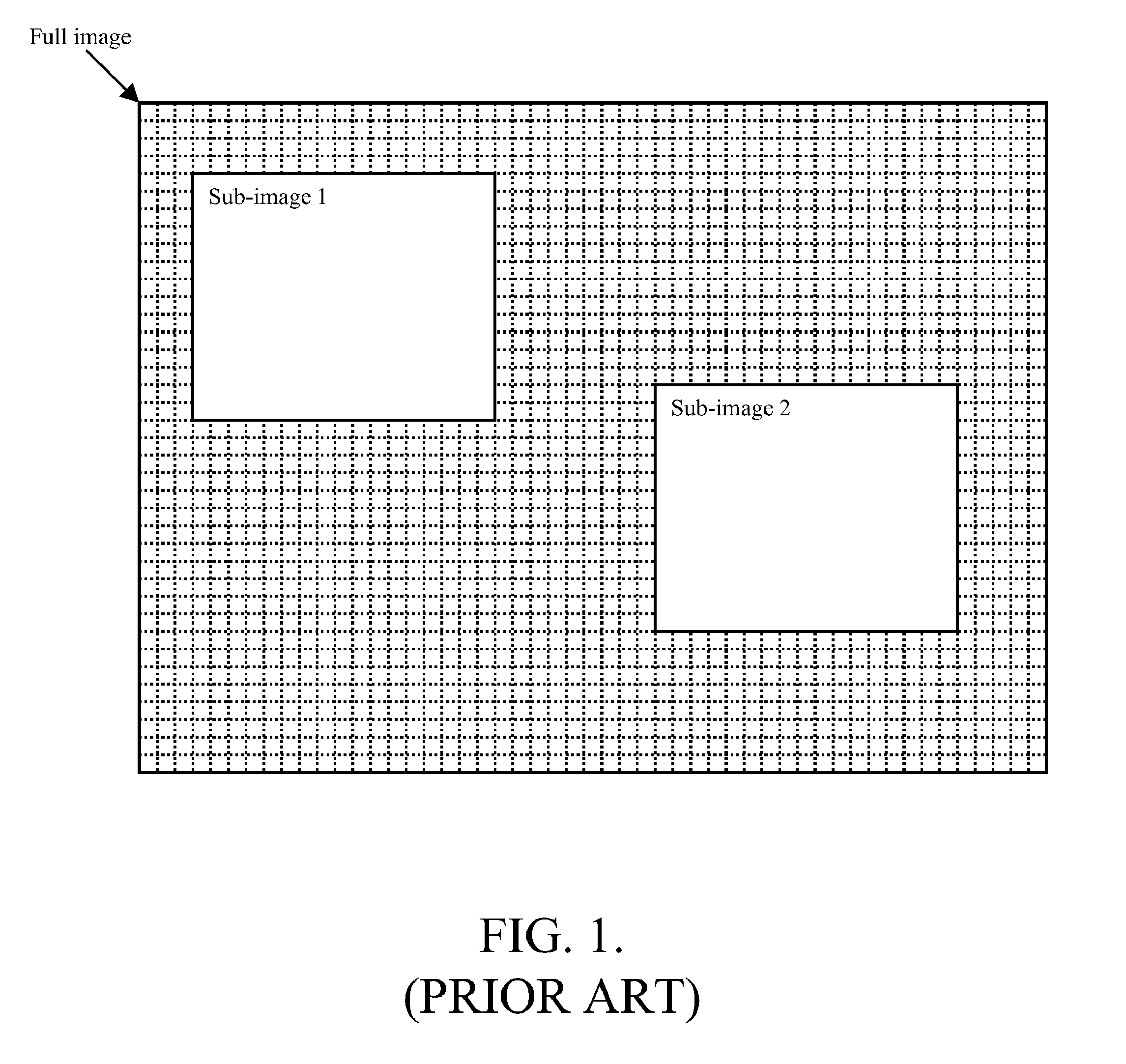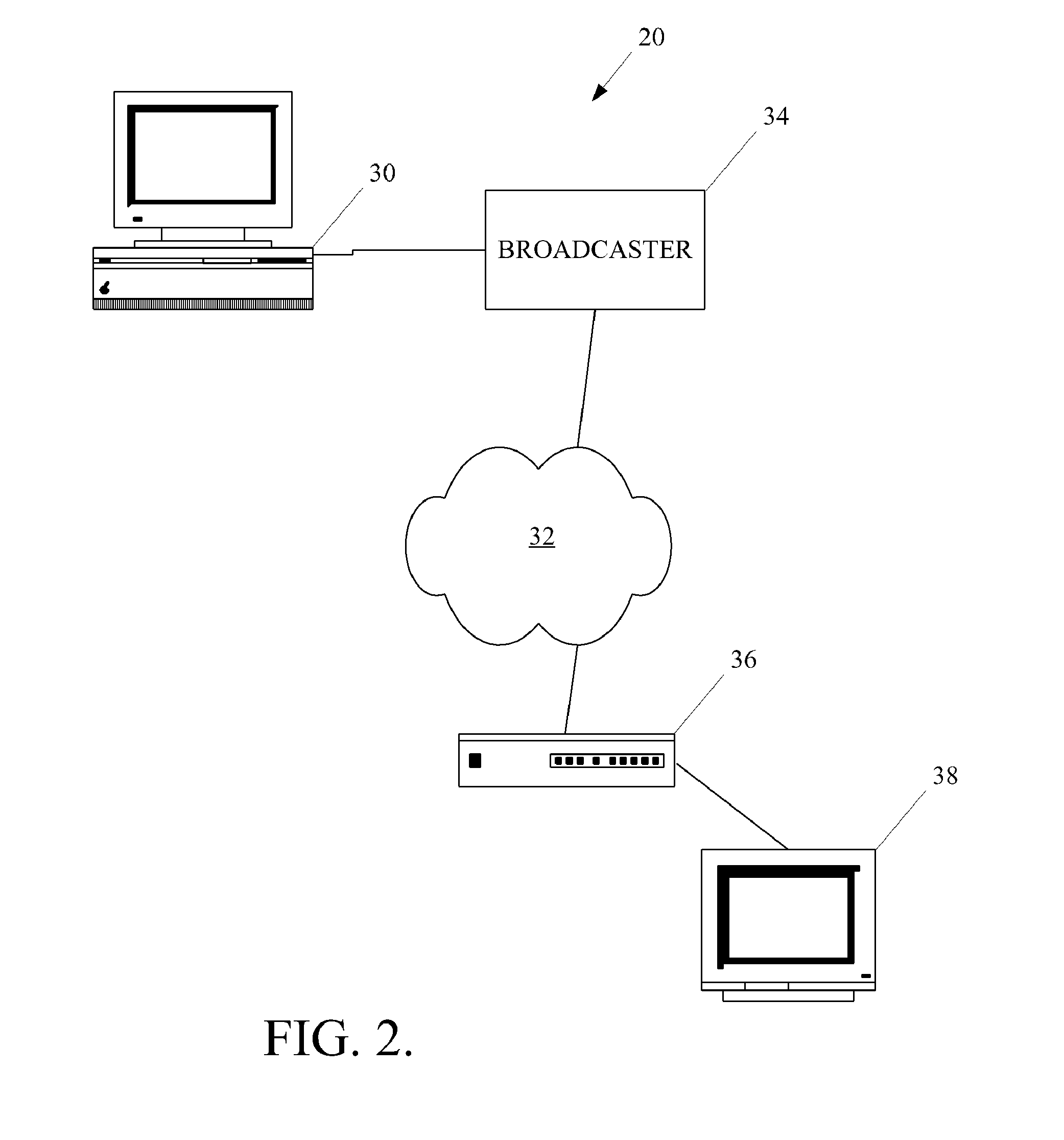Methods and systems for repositioning MPEG image content without recoding
- Summary
- Abstract
- Description
- Claims
- Application Information
AI Technical Summary
Problems solved by technology
Method used
Image
Examples
Embodiment Construction
[0028]FIG. 2 shows a diagram of a system 20 that creates sub-images from a larger image. Prior to broadcast, an image file passes is processed by a special MPEG video encoder device 30 to produce a sub-image. The sub-image is encoded and is multiplexed with other audio, video and data content for broadcast by the device 30, a broadcast device 34 and / or some other encoding / multiplexing device. The multiplexed data stream is broadcast to a Set-Top Box (STB) 36 over a network 32. The STB 36 decodes the data stream and passes the decoded data stream to an iTV application running on the STB 36. The iTV application generates an image from the decoded data stream. The resulting image is displayed on a viewer's television screen (display 38).
[0029]FIG. 3 shows an example of the device STB (data processing / media control reception system) 36 operable for using embodiments of the present invention. The STB 36 receives data from the broadcast network 32, such as a broadband digital cable netwo...
PUM
 Login to View More
Login to View More Abstract
Description
Claims
Application Information
 Login to View More
Login to View More - R&D
- Intellectual Property
- Life Sciences
- Materials
- Tech Scout
- Unparalleled Data Quality
- Higher Quality Content
- 60% Fewer Hallucinations
Browse by: Latest US Patents, China's latest patents, Technical Efficacy Thesaurus, Application Domain, Technology Topic, Popular Technical Reports.
© 2025 PatSnap. All rights reserved.Legal|Privacy policy|Modern Slavery Act Transparency Statement|Sitemap|About US| Contact US: help@patsnap.com



